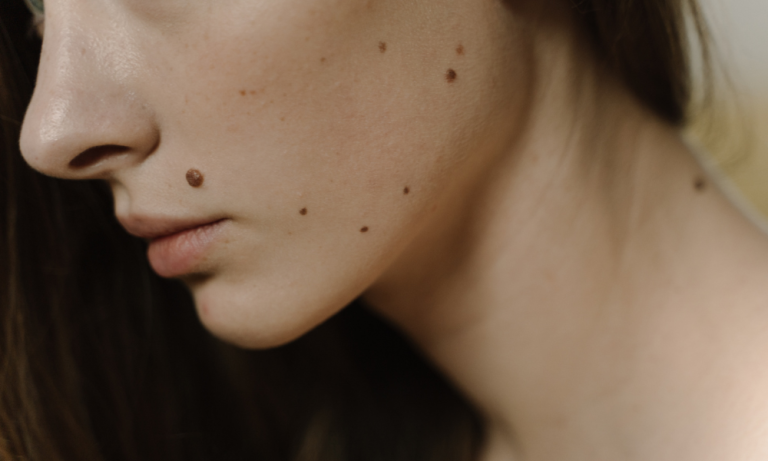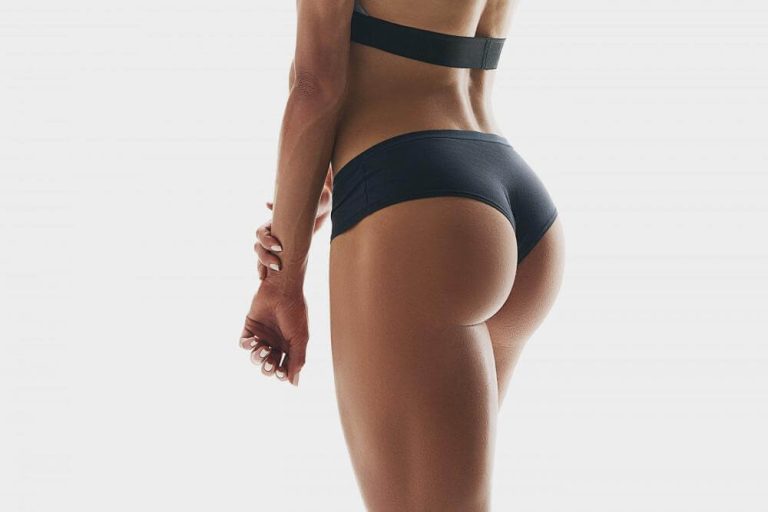Shaping Your Silhouette: The Ultimate Guide to Lipo Body Sculpting Contouring
Posted on: December 11, 2023
Lipo body sculpting is reshaping the way we approach cosmetic enhancement, offering a targeted method to redefine your musculature and abdomen contours, with precise incisions that can also enhance the face. It’s not just about slimming down; it’s about crafting the musculature and physique you envision with precision and artistry through invasive body shaping and cosmetic surgery techniques like laser lipo. “Your body’s musculature is the canvas, and cosmetic surgery, specifically lipo sculpting, is the brush.” Before a patient dives into this transformative treatment journey, it’s crucial to grasp the nuts and bolts of the procedure—how it can chisel away at stubborn areas resistant to diet and exercise. With an array of cosmetic surgery techniques at their disposal, from traditional tube-assisted removal to advanced laser sessions like Lipo Sculpt Lite, each team tailors their treatment approach to fit your skin type, targeted areas, and individual aspirations. The office becomes a place where science meets personal aspiration in cosmetic surgery, ensuring every targeted area is considered by our team for optimal invasive body shaping results.
Defining Lipo Body Sculpting
Lipo body sculpting is a specialized treatment for removing fat from targeted areas. It’s different from general weight loss.
What Is Lipo Sculpting
Lipo body sculpting, also known as liposuction treatment, targets specific areas of the body. Laser lipo and lipo sculpt lite offer invasive body shaping solutions that remove stubborn fat pockets resistant to diet and exercise. This method, known as lipo sculpt lite, utilizes various techniques to break down and remove fat from the body.
Not General Weight Loss
Unlike overall weight loss, lipo does not reduce body weight significantly. It’s designed for shaping and contouring the body. People who are relatively fit but have problem areas benefit the most from this invasive body shaping procedure, like lipo sculpt lite.
For Contouring, Not Obesity
Lipo is not a treatment for obesity. Instead, it helps define and enhance your natural figure. Invasive body shaping procedures, such as lipo sculpt lite, should be seen as a final touch after achieving a healthy lifestyle.
Preparatory Steps and Eligibility Criteria
Before diving into lipo body sculpting, understanding the initial steps and eligibility is crucial. It ensures a safe and effective journey towards your body goals.
Initial Consultation Needs
The first step to lipo body sculpting is a detailed consultation with a specialist. This meeting is essential for several reasons.
- It helps assess your health.
- The doctor learns about your medical history.
- You discuss your aesthetic goals.
During this body shaping session, you’ll need to be open about past surgeries, allergies, or current medications. These factors can influence the procedure’s safety and results.
Health Conditions Impact
Certain health conditions can affect whether you’re an ideal candidate for lipo body sculpting. Your overall health plays a significant role in how well you’ll recover and the success of the body shaping procedure.
Some conditions that may impact eligibility include:
- Heart disease
- Diabetes
- Blood disorders
If you have these or other significant health issues, it might be safer to explore alternative options. A responsible specialist will prioritize your wellbeing over any cosmetic benefits.
Realistic Expectations Vital
Maintaining realistic expectations is important for anyone considering lipo body sculpting. It’s not a magic solution but rather an enhancement tool.
Here’s what candidates should understand:
- Lipo sculpts, but doesn’t drastically change weight.
- Results vary based on individual factors like skin elasticity.
- Maintenance requires healthy lifestyle choices post-procedure.
Your surgeon should ensure that you have a clear picture of potential outcomes. They’ll explain what lipo can and cannot do for your unique physique.
Surgical vs Non-Surgical Body Contouring
Choosing between surgical and non-surgical body contouring depends on individual needs, including how much downtime one can afford and the desire for long-term results. Both methods have evolved with technology, offering more options than ever.
Downtime and Invasiveness
Surgery is known for its invasiveness. It involves incisions, anesthesia, and a recovery period that can last weeks. Patients must prepare for time off work and assistance with daily activities.
Non-surgical options like laser treatments or cryolipolysis require no cuts. There’s little to no downtime. You could potentially have a session during a lunch break and return to work immediately after.
Longevity of Results
Cosmetic surgery often provides dramatic changes that last years. For example, liposuction removes fat cells permanently from the treated area.
In contrast, non-surgical methods typically offer gradual improvement over time. While these procedures can be effective at reducing stubborn fat, they may require maintenance sessions to uphold their effect.
Advancements in Technology
Technology has significantly boosted non-surgical treatments recently. High-intensity focused ultrasound (HIFU) and radiofrequency are some examples of innovations shaping the industry.
These advancements mean better results with less discomfort and risk compared to earlier non-surgical techniques.
Choosing What’s Right
The choice between surgical or non-surgical body contouring should consider:
- Individual health
- Desired outcome
- Tolerance for downtime
- Budget constraints
Surgeons can provide personalized advice based on these factors.
Procedure Options: High-Definition, Traditional, and Laser-Assisted
In the realm of body contouring, various lipo body sculpting techniques offer tailored results. Each method has its unique benefits and is suited for different body areas.
High-Definition vs Traditional
High-definition (HD) liposculpture carves out more precise contours than traditional methods. It targets small fat deposits to enhance underlying musculature. This precision allows for a chiseled look that fitness enthusiasts might seek.
Traditional liposuction, on the other hand, focuses on larger fat removal. It’s best for those who want to reduce significant fat volume but aren’t looking for detailed sculpting. Think of HD like fine brushwork in a painting while traditional is broad strokes.
Laser-Assisted Benefits
Laser-assisted liposculpture uses laser technology to liquefy fat before removal. This makes it easier to remove and less traumatic for the body. As a result, patients often experience quicker recovery times.
The laser also stimulates collagen production which can lead to tighter skin post-procedure. Imagine your skin as elastic that becomes snugger after laser’s gentle ‘tug’.
Suitability for Body Areas
Different body areas respond better to certain procedures:
- HD Liposculpture: Ideal for abs, arms, and smaller zones needing definition.
- Traditional Liposuction: Best for thighs, belly, and larger areas with excess fat.
- Laser-Assisted: Perfect when skin tightening is desired alongside fat removal; think neck or lower chin area.
Patients must consult with their surgeon to choose the right technique based on their goals.
Understanding Costs and Consultation for Liposculpture
Lipo body sculpting can vary in cost. The consultation helps determine the specific technique and price.
Cost Influencing Factors
The overall cost of liposculpture hinges on multiple elements. These include the area’s size, the procedure’s complexity, and the surgeon’s expertise. Geographic location also plays a role; some cities have higher fees due to increased demand or cost of living.
Surgeons with extensive experience may charge more. However, their knowledge can lead to better results and fewer complications. The type of procedure selected impacts the price too. Traditional liposuction might differ in cost from laser lipo or high-definition techniques.
Equipment used during surgery also affects pricing. Advanced technology like laser lipo machines can add to the total expense. Anesthesia and operating room fees contribute to your final bill.
Role of Consultation
A free consultation is key before deciding on liposculpture. It allows you to meet with a specialist who assesses your needs. During this meeting, they will examine fat deposits and discuss desired outcomes.
The surgeon outlines suitable options based on your body type and goals. They may suggest traditional liposuction or newer methods like laser-assisted lipolysis. Each technique has its own set of benefits that cater to different situations.
Your consultation is a chance to ask questions about risks, recovery time, and expected results. The surgeon provides a tailored plan along with an estimated price range for your specific case.
Insurance Considerations
Cosmetic procedures like liposculpture are usually not covered by insurance plans since they’re elective surgeries aimed at improving appearance rather than treating illness or injury.
However, there might be exceptions if liposculpture is part of reconstructive surgery after an accident or due to medical necessity involving health issues caused by excess fat deposits.

Always check with your insurance provider beforehand about coverage policies related to cosmetic surgeries such as lipo body sculpting.
Navigating the Recovery Journey
After discussing the financial and preparatory aspects of liposculpture, it’s crucial to understand what comes next. The recovery from lipo body sculpting is a journey that requires patience and adherence to medical guidelines.
Typical Recovery Timelines
Each lipo body sculpting procedure has its own recovery timeline. Patients often wonder how long it will take to bounce back. Generally, many patients can return to work within a few days for less invasive procedures. However, more extensive surgeries might require several weeks off.
For example, tumescent liposuction typically involves a shorter recovery time compared to traditional liposuction. On average, patients might expect:
- Minor procedures: 1-3 days before returning to daily activities.
- Major surgeries: 2-4 weeks for initial recovery with full results visible after a few months.
It’s important to note that individual experiences vary based on factors like health and the extent of surgery.
Post-Operative Symptoms
Recovery brings common symptoms across different types of liposculpture. Many patients report bruising, swelling, and discomfort post-surgery. These are normal signs your body is healing.
Some typical symptoms include:
- Swelling: Peaks around 48 hours post-op and gradually diminishes.
- Bruising: Can last up to two weeks but varies per patient.
- Pain: Managed with prescribed or over-the-counter medication as advised by your doctor.
Remember, experiencing these symptoms doesn’t necessarily mean something is wrong; they’re part of the process.
Following Medical Advice
The importance of following medical advice cannot be overstated when recovering from lipo body sculpting. Your surgeon provides specific instructions tailored to your situation which you should follow meticulously.
Instructions may include:
- Wearing compression garments to reduce swelling.
- Avoiding strenuous activities until cleared by your doctor.
- Attending follow-up appointments for monitoring progress.
Adhering strictly to this advice not only ensures a smoother recovery but also optimizes the final results of your procedure.
Aftercare and Results Maintenance
Lipo body sculpting can reshape your figure, but aftercare is crucial. Maintaining the results requires lifestyle changes and long-term strategies.
Lifestyle Changes Matter
After lipo body sculpting, adopting a healthy lifestyle is key. This isn’t just about short-term recovery; it’s about keeping your new shape for good.
Eat balanced meals with plenty of fruits, vegetables, lean proteins, and whole grains. Regular exercise also helps maintain your results. Aim for at least 30 minutes of moderate activity most days of the week.
Remember, liposculpture removes fat cells, but if you gain weight, remaining fat cells can expand. Staying active and eating right prevents this.
Post-Procedure Care Tips
Right after treatment, follow your doctor’s instructions closely to avoid complications. They’ll likely suggest wearing compression garments to reduce swelling and support healing tissues.
Avoid strenuous activities as recommended by your healthcare provider. Typically, this means no heavy lifting or vigorous exercise for a few weeks post-treatment.
Keep all follow-up appointments with your surgeon. They can monitor your progress and catch any issues early on.
Extend Liposculpture Benefits
To make the most of liposculpture in the long term, combine lifestyle changes with smart care strategies. Don’t see lipo body sculpting as a one-time fix; view it as a step towards ongoing health improvement.
Regular massages may help smooth out the treated areas and promote better circulation. Always check with your surgeon before starting any new post-procedure treatments or activities.
Stay hydrated by drinking plenty of water each day. Hydration is vital for skin elasticity and overall health.
Addressing Risks and Concerns
Lipo body sculpting can transform your physique by targeting problem areas. However, it’s crucial to understand and address the potential risks involved.
Potential Risks Identified
Lipo body sculpting is generally safe when performed by a qualified surgeon. But like any surgical procedure, it carries certain risks. These include infection, bleeding, and adverse reactions to anesthesia. There’s also the possibility of contour irregularities where the skin might appear bumpy or withered due to uneven fat removal or poor skin elasticity.
Mitigating Complications
The key to minimizing complications lies in preparation and aftercare. Before the procedure:
- Choose a reputable clinic with high standards for safety.
- Get a thorough medical evaluation to ensure you’re a good candidate.
- Follow all pre-surgery instructions from your doctor carefully.
After the procedure:
- Adhere strictly to your doctor’s aftercare guidelines.
- Attend all follow-up appointments for monitoring healing progress.
These steps are essential for reducing post-procedure issues such as swelling or infections.
Experienced Practitioner Importance
Selecting an experienced practitioner is perhaps the most critical decision you’ll make regarding lipo body sculpting. An expert in this field will:
- Assess whether you’re an ideal candidate for lipo body sculpting.
- Tailor the procedure specifically to your targeted areas while considering overall health and well-being.
They possess the skills necessary to minimize risk factors significantly through precise techniques and comprehensive care standards.
Comparing Invasive and Non-Invasive Techniques
Lipo body sculpting is transforming the way we approach fat reduction. This section compares invasive and non-invasive methods, analyzing efficiency, pain levels, and long-term effects.
Efficiency of Results
Invasive techniques like traditional liposuction can yield dramatic changes in body contour. The removal of fat cells is direct and immediate. However, it requires a significant recovery period. Non-invasive methods such as CoolSculpting or laser treatments offer gradual results over several weeks or months. These procedures target fat cells without surgery.
For those seeking quick results for a special event, invasive body sculpting might be preferable. On the other hand, if you’re looking for subtle improvements without downtime, non-invasive options may suit you better.
Pain Level Analysis
When considering pain levels, there’s a clear distinction between the two techniques. Invasive procedures involve surgery which can lead to discomfort and require pain medication during recovery. Patients often report feeling soreness similar to an intense workout.
Non-invasive body sculpting typically involves minimal discomfort. Some patients describe a cooling sensation or mild tingling during treatments like cryolipolysis but no significant pain.
Choosing between comfort and effectiveness depends on personal tolerance and desired outcomes.
Long-Term Effects
Over time, both invasive and non-invasive lipo body sculpting methods show lasting results if patients maintain their weight. But with invasive techniques, the risk of complications could affect long-term satisfaction.
Touch-up requirements are also different for each method. Invasive liposuction might need revisions due to uneven fat removal or changes in body weight over time. Non-invasive treatments may require multiple sessions to achieve desired results but typically have no associated surgical risks.
The choice hinges on whether one prefers a one-time procedure with potential risks or multiple safer sessions with incremental progress.
Conclusion
Lipo body sculpting is like giving your body a new canvas, allowing you to contour and shape as you desire. You’ve explored the ins and outs, from slicing through the jargon to weighing surgical against non-surgical options. It’s clear that whether you opt for high-definition finesse or traditional methods, understanding the costs, recovery, and aftercare is key to maintaining those results. Sure, there are risks, but knowledge is your trusty shield.
Now it’s in your court. Ready to take the leap? Chat with a pro and see if lipo body sculpting is your ticket to feeling fab in your skin. Remember, it’s not just about looking good—it’s about that swagger in your step that says, “I got this.” Go on, grab life by the love handles and make your move!
Frequently Asked Questions
What is lipo body sculpting?
Lipo body sculpting, also known as liposculpture, is a cosmetic procedure that reshapes and slims specific areas of the body by removing excess fat deposits.





